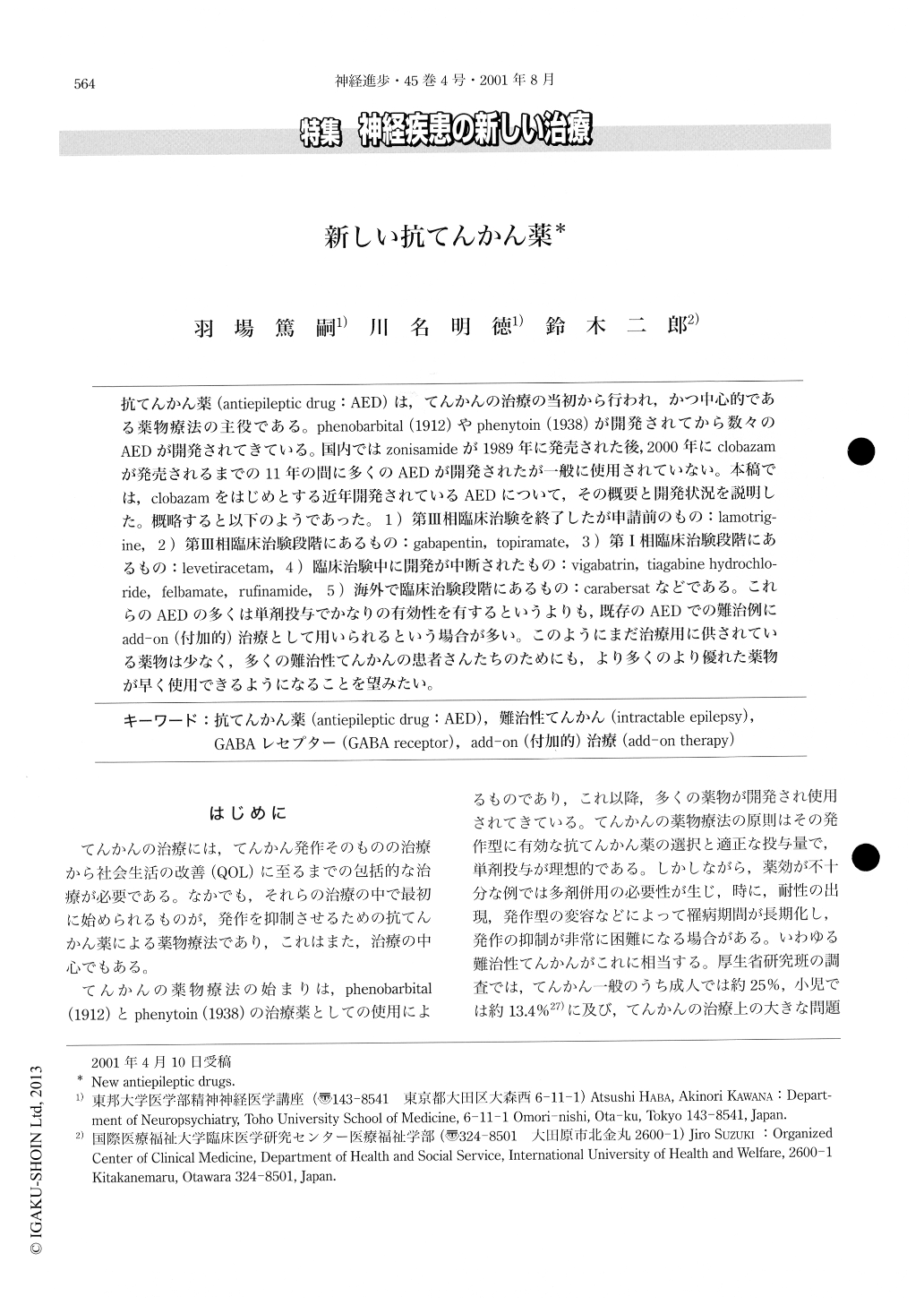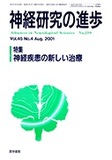Japanese
English
- 有料閲覧
- Abstract 文献概要
- 1ページ目 Look Inside
抗てんかん薬(antiepileptic drug:AED)は,てんかんの治療の当初から行われ,かつ中心的である薬物療法の主役である。phenobarbital(1912)やphenytoin(1938)が開発されてから数々のAEDが開発されてきている。国内ではzonisamideが1989年に発売された後,2000年にclobazamが発売されるまでの11年の間に多くのAEDが開発されたが一般に使用されていない。本稿では,clobazamをはじめとする近年開発されているAEDについて,その概要と開発状況を説明した。概略すると以下のようであった。1)第III相臨床治験を終了したが申請前のもの:lamotrigine,2)第III相臨床治験段階にあるもの:gabapentin,topiramate,3)第1相臨床治験段階にあるもの:levetiracetam,4)臨床治験中に開発が中断されたもの:vigabatrin,tiagabine hydrochlorlde,felbamate,rufinamide,5)海外で臨床治験段階にあるもの:carabersatなどである。これらのAEDの多くは単剤投与でかなりの有効性を有するというよりも,既存のAEDでの難治例にadd-on(付加的)治療として用いられるという場合が多い。
An antiepilepic drug (AED) is one of the leading part of pharmacotherapy which has been carried out from at first in the treatment of epilepsy and has played the main role in it. Since phenobarbital (1912) and phenytoin (1938) were discovered effective against epilepsy, many AEDs have been developed. Some AEDs has been developed in these 11 years, after zonisamide was launched in 1989 domestically until clobazam was launched in 2000. In this paper we explained the outline of these AEDs and developmental situation around new AEDs, particularly as one of them clobazam has been developed recently. Grossly summarizing as following ; 1) Pre-registration after finishing the phase III study : lamotrigine, 2) At phase III study : gabapentin, topiramate, 3) At phase I study : levetiracetam, 4) Withdrawn from developement : vigabatrin, tiagabine hydrochloride, felbamate, rufinamide, 5) At phase II study in foreign countries : carabersat.

Copyright © 2001, Igaku-Shoin Ltd. All rights reserved.


